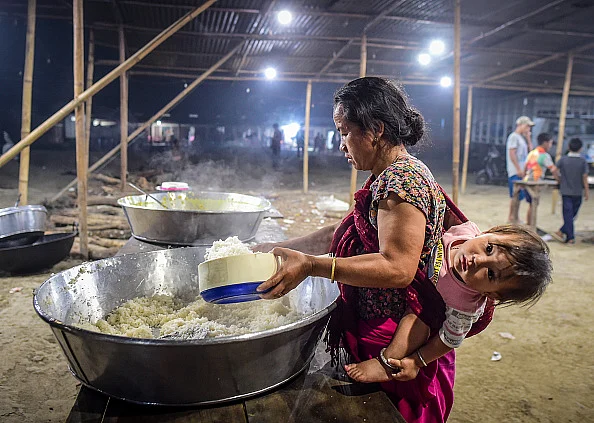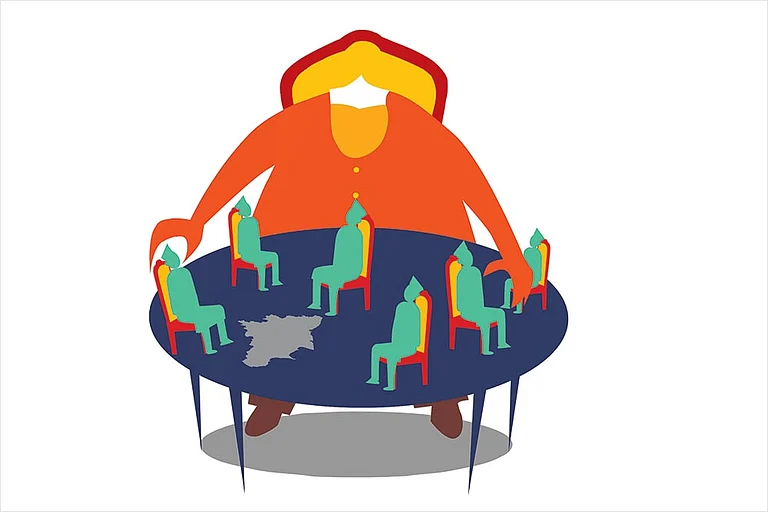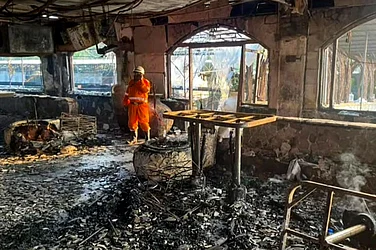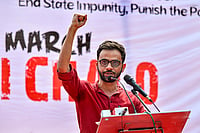After 77 years of independence, and having achieved the status of the fifth-largest economy in the world, with 200 Indians in the Forbes ‘2024 World’s Billionaires’ list, if India ranks 111th out of 125 countries in the Global Hunger Index, the first thing to be debated in parliament should be to legislate the Right to Food with budget allocation and fine details of its strict implementation with people’s scrutiny.
The hunger and undernutrition statistics are so dismal that the silence of our representatives is unpardonable. India ranks first in the world in wasting (low weight for one’s height) in children and low birth weight among babies, and first in South Asia in anaemia among women. India is home to 194.6 million (19.5 crore) undernourished people—the highest in any country. This has come to light in this year’s ‘State of Food Security and Nutrition in the World’ (SOFI) report released on July 24 this year. More than half of the population of India is not able to afford a healthy diet.
As far as childhood nutrition is concerned, the prevalence of wasting in children under five years is 18.7% in India. This is the highest in South Asia. The prevalence of stunting (low height for one’s age) in children under five years is 31.7%. Drishti reported in 2022 that the most alarming figure revealed is that approximately 4,500 children under the age of five die every day in the country due to hunger and malnutrition, amounting to over three lakh deaths every year, owing to hunger, of children alone. Whereas in 2011 it was reported that “every year 2,500 children in India die due to malnutrition, primarily caused by poverty.” When the Planning Commission informed the Supreme Court of this, the Court expressed its anguish.
The proportion of under-five deaths attributable to malnutrition changed only modestly from 70·4% (67.0–74.0) in 1990 to 68·2% (65·8–70·7) in 2017.The government’s half-hearted, patchy measures cannot solve a problem of this magnitude. We have the National Food Security Act and the latest Pradhan Mantri Garib Kalyan Yojana, launched in April 2020, to compensate for the harsh, unnecessary lockdown measures. Extended from January 1, 2023, for five more years, they provide each eligible household 5 kg of rice or wheat per person and 1 kg of dal per family each month, free of cost. The major problem here is that there is no inbuilt mechanism for assured vigilance by the people for the quality and quantity of the distributed grains.
Also, this amount is not sufficient to provide a healthy diet to the people. The Right to Food movement’s demand was: a universal public distribution system providing at least 50 kg of grain per family with 5.25 kg of pulses and 2.8 kg of edible oils, and special food entitlements for destitute households including an expanded Antyodaya programme. We should also think of other components of a healthy diet. That might involve changes in import-export policies also. That no food item may be exported before every citizen of India gets the vegetables, fruits, etc., required daily for maintaining good health. Luxurious items catering to the need of the wealthy may not be imported at the cost of the health of our citizens. This requires a big change in political thinking.
To assume that once some basic caloric requirement is fulfilled, the other health components will be managed by the people themselves is simplistic. People have other requirements with growing aspirations for education, better job prospects, etc. Experts have advised focusing on the inclusion of locally grown foods in service delivery systems, which will reduce the burden on the Union Government as well as ensure food and nutrition security of rights holders. Local and seasonal foods are good for health. It would be as per the traditional habits of the local people.
A targeted system has many pitfalls causing the exclusion of many who are actually poor because of various reasons. In a universal system, only those who would actually have the need would utilise the services. That is the experience in our country.
To understand that just the availability of food is not sufficient to solve the problem, let’s compare a few countries. The Economic Survey 2018 says that the net availability of foodgrains is 487 grams per person per day. The per capita food grain availability per annum was 177.7 kg in 2016. In 2015, China’s food grain availability per capita was 450 kg, 200 kg in Bangladesh and more than 1,100 kg in the US. But one in eight households (12.8 percent) experienced food insecurity, or lack of access to an affordable, nutritious diet in the US. 16.6% of people are malnourished in India, 11.2% in Bangladesh, and 2.5% in China and the US. China’s success in reducing the prevalence of malnutrition is associated with public policies taking in relatively egalitarian distribution—the result of rural collective institutions, and widespread public support of health and nutrition.
In India, the government’s Public Distribution System (PDS) was a universal programme. It helped increase calorie intake. But food became inaccessible when the PDS was turned into a targeted programme. It led to more hunger. Instead of sealing the loopholes in the system by giving people more rights to observe the daily functioning of the PDS, there is a continuous effort to erode the system.
Instead of ensuring nutrition by legislating the Right to Food with all its finer details, there have been moves to get away from this social responsibility by successive governments many times. One such effort was by experimenting with cash transfer instead of food distribution in the PDS. But it has been opposed by several activists including Harsh Mander who said, “The PDS supplies rations at a constant price, irrespective of the fluctuations in market prices. This therefore provides a shield against inflation, a benefit that cash transfers cannot match.”
In September 2010, then Prime Minister Manmohan Singh had said that his government cannot give the grains that are rotting in State godowns to the poor freely, in response to an order by the Supreme Court of India. The PM was more worried about market effects. In the enthusiasm to digitise everything, linking of Aadhar cards to ration cards created problems for poor, hardworking people, resulting in a lack of access to food as well as deaths.
The Right to Food is a constitutionally protected right in India. In PUCL vs Union of India (2001), the Indian Supreme Court declared that the Right to Food comprises part of the fundamental Right to Life under Article 21 of the Indian Constitution. But under various pretexts, the implementation is never as per the requirement.
The Right to Food cannot be seen or achieved in isolation from the direction of the economy as a whole. The ideological propaganda by the mainstream media about government policies is anti-poor and pro-corporate. Any free distribution to the vast majority of people is labelled “revadi” (freebie) and the concessions given to corporates are considered positive economic measures. I would like to stress that it is the right of every citizen working for the wellbeing of society to have access to all the things required to lead a healthy, happy life. And it is the responsibility of the government to provide such work to all citizens.
In spite of the absence of evidence that concessions given to corporates actually create jobs or increase the GDP, the government has reduced the base corporate tax rate from 30% to 22%, and for new manufacturing companies from 25% to 15%; tax exemptions total at least Rs 55 lakh crore over the period 2014-24. During the first nine years of the Modi government (2014-15 to 2022-23), public sector banks have written off loans totalling Rs 10.42 lakh crore and NPAs stand at 4.28 lakh crore. India has almost zero property tax and no wealth tax. As Bhabani Nayak notes, even the biased empirical studies of institutions like the World Bank and the Tax Foundation indicate that a 10 percentage point reduction in corporate tax rates contributes only 0.2 percentage points to annual GDP growth.
Thus, the Right to Food should be understood in a holistic manner where the overall responsibility and accountability of the elected government is towards the people. Therefore, all the connected matters and the economy as a whole, are to be directed for the welfare of the people and not for the benefit of a few profiteers. It also means that people’s involvement in decision making, implementing and vigilance should be by set procedures, decentralisation and not merely by agitation or a few intellectuals from non-governmental organisations that advise the government.
(Maya Valecha is a physician-activist seeking nationalisation/socialisation of healthcare and a part of UHO, a watchdog to uphold science and people-centric health policies)






















